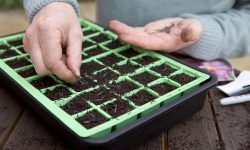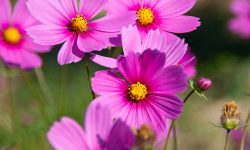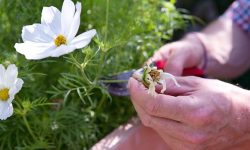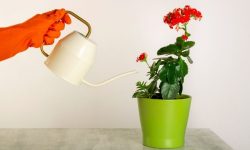Succulents are beloved for their sculptural beauty, vibrant colors, and ease of care. Whether you want to create a low-maintenance garden, decorate your indoor space, or explore container gardening, succulents provide an excellent solution. However, knowing how to plant succulents properly is essential for maximum growth and minimal effort.
This comprehensive guide will walk you through everything you need to know, from choosing the right plants to caring for them after planting. With the right techniques, your succulents can thrive in a variety of environments, whether indoors or outdoors.
Understanding Succulent Growth Habits
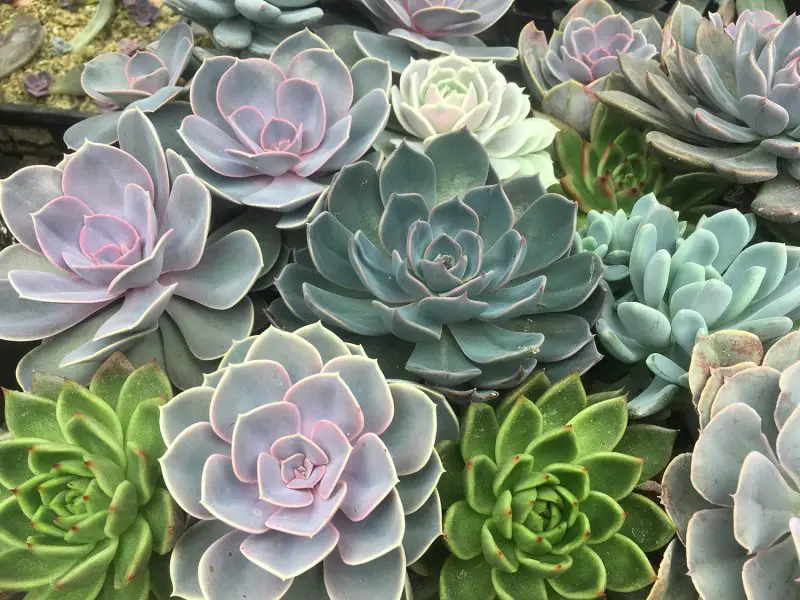
What Makes Succulents Unique
Succulents are uniquely adapted to survive in harsh environments thanks to their ability to store water in specialized tissues. This adaptation not only helps them withstand long periods without rainfall but also gives them their characteristic plump, fleshy appearance. Their thick leaves or stems reduce moisture loss, while their waxy coating helps minimize evaporation. This survival strategy allows succulents to thrive in conditions that would be challenging for other plants. In addition, succulents are often low-maintenance, pest-resistant, and suitable for both indoor and outdoor settings, making them ideal for beginners and experienced gardeners alike.
Growth Patterns and Light Needs
Succulent growth habits vary depending on the species. Some varieties, such as echeveria and sempervivum, grow in tight, symmetrical rosettes, while others like sedum and string of pearls develop trailing or sprawling forms. Upright growers such as aloe and candelabra cactus can become focal points in container arrangements or landscape borders.
Lighting plays a crucial role in shaping these growth patterns. Most succulents thrive in six to eight hours of bright, indirect sunlight per day. Inadequate light can lead to etiolation, where the plant stretches out unnaturally in search of sun, resulting in leggy growth and pale leaves. For indoor growers, placing succulents near south- or west-facing windows or supplementing with grow lights ensures they get the energy needed for compact, healthy development. Proper light exposure also enhances pigmentation, intensifying reds, purples, and blues in many colorful varieties.
Choosing the Right Succulents for Your Space
Indoor vs Outdoor Varieties
Choosing between indoor and outdoor succulents starts with understanding their natural light preferences and temperature tolerance. Indoor varieties like haworthia, gasteria, and certain types of jade plants adapt well to filtered light and drier air typically found in homes and offices. They grow slowly, tolerate lower light levels, and are generally less prone to sunburn or drying out. These types are perfect for windowsills, desks, or bathroom shelves.
In contrast, outdoor succulents such as agave, yucca, opuntia, and spreading sedum need plenty of sunlight and ventilation. These species flourish in full sun and benefit from daily temperature shifts, which stimulate more intense coloration and stronger growth. However, not all succulents can withstand extreme heat or cold, so site selection and seasonal care matter when placing them outdoors.
Climate Considerations
Matching succulents to your local climate is crucial for long-term success. The USDA hardiness zone map is a useful guide for selecting varieties that can survive winter temperatures in your region. For example, sempervivum and certain types of sedum can handle snow and frost, making them excellent for cold zones. In contrast, echeveria, kalanchoe, and aloe are more sensitive and best grown indoors or brought inside before the first frost.
For gardeners in warm, dry climates (zones 9–11), many succulents can thrive outdoors year-round with minimal protection. However, if you live in a humid or rainy area, ensure your soil drains well and avoid succulents prone to rot in wet conditions. In all cases, consider container gardening as a flexible solution that allows you to move your succulents indoors or to shelter during harsh weather.
Purpose and Aesthetic Goals
Succulents offer endless possibilities for creating a garden that reflects your personal taste. If your goal is to brighten up a space, look for colorful species like crassula capitella with fiery red tips, or kalanchoe blossfeldiana, which blooms in bold pinks, oranges, and yellows. These varieties bring a cheerful pop of color to patios, windowsills, and rock gardens.
For architectural interest, select succulents that provide contrasting shapes and textures. Aloe vera and euphorbia tirucalli offer upright, spiky forms, while trailing succulents like string of bananas or donkey’s tail can spill over edges of containers or hanging baskets. Combining vertical and trailing varieties creates depth and movement in arrangements. Whether you’re aiming for a minimalist desert look or a lush, cascading container, there’s a succulent combination that fits your design goals perfectly.
Preparing the Right Planting Medium
Importance of Well-Draining Soil
Succulents thrive in gritty, porous soils that mimic their native arid environments. Soil that drains too slowly can trap excess water around the roots, leading to rot and fungal problems. A high-quality succulent or cactus mix typically contains a blend of inorganic materials like sand, perlite, and pumice, which improve both aeration and drainage. Avoid peat-heavy soils, as they retain moisture and break down too quickly, compacting over time and suffocating the roots.
Testing and Adjusting Soil
Before planting, moisten a handful of your soil mix to check its consistency—it should feel crumbly, not sticky or dense. You can perform a simple drainage test by filling a pot with your soil mix, watering it thoroughly, and timing how fast the water exits through the bottom. If it takes more than 30 seconds, it’s a sign you need to lighten the mix. Add more mineral amendments like coarse sand or pumice to increase porosity. In garden beds, you may need to dig in gravel or expand planting mounds to lift roots above areas where water might pool. This extra step can significantly improve root health and growth performance.
Selecting the Right Containers
Container Material Matters
The type of container you choose has a direct impact on the health of your succulents. Clay and terracotta pots are especially well-suited for succulent growing because they are porous, allowing excess moisture to escape through the walls of the pot. This natural breathability helps the soil dry out faster and reduces the risk of root rot. These containers are particularly useful in humid climates or for beginners still learning how often to water.
On the other hand, plastic pots retain more moisture and can make overwatering more likely, especially in shaded or cooler areas. Glazed ceramic containers, while aesthetically pleasing, can also trap humidity inside the root zone unless you carefully manage watering frequency. If you opt for non-porous materials for design purposes, it’s essential to adjust your watering schedule and monitor soil dryness regularly.
Drainage Is Essential
Good drainage is non-negotiable when growing succulents. Without drainage holes, water accumulates at the bottom of the pot, creating a soggy environment that suffocates roots and encourages fungal growth. Even a perfectly balanced soil mix can’t protect succulents in a container that traps water.
If your favorite pot lacks drainage holes, you can drill them using a masonry or ceramic bit, depending on the container’s material. Alternatively, you can use the no-hole pot as a decorative outer shell—commonly known as a cachepot—and place a smaller container with proper drainage inside it. Be sure to remove the inner pot for watering and let it drain fully before placing it back, ensuring no excess water collects in the outer container. This layered approach offers both functionality and design flexibility while protecting your succulents from overwatering.
How to Plant Succulents Step by Step
Step 1: Choose Healthy Plants
Begin your planting process by selecting the healthiest succulents possible. Look for plants with compact growth, vivid color, and plump, unblemished leaves that feel firm to the touch. A well-hydrated succulent will not appear shriveled or wrinkled. Avoid plants with soft, mushy stems or blackened roots, as these are signs of rot. Also steer clear of those with signs of insect infestation such as mealybugs, which often appear as white cotton-like clumps on leaves or stems. Succulents that are leggy or stretched may still survive, but they often lack structural strength and aesthetic appeal, making them a less ideal starting point for successful planting.
Step 2: Prepare the Container and Soil
Before you begin planting, prepare your container by confirming that it has adequate drainage holes. Then, fill it about three-quarters full with your chosen well-draining succulent soil mix. If you’re using commercial cactus soil, you can enhance its drainage further by mixing in perlite, coarse sand, or pumice.
Take your succulent out of its nursery pot and gently remove any excess soil from the roots. Tease apart the root ball lightly with your fingers to encourage outward root growth and remove any dead or damaged roots. This not only stimulates new growth but also ensures the roots integrate well with the new soil environment. Preparing the soil and root system properly gives your plant the best start possible in its new home.
Step 3: Place and Position
When placing the succulent in the container, position it upright with the crown of the plant slightly above the soil line. This subtle elevation prevents moisture from collecting at the base of the stem, which is a common cause of rot. Gently fill in the remaining space around the root ball with soil, pressing lightly to eliminate air pockets but not compacting the soil too tightly, which can hinder drainage. For a group planting, space each succulent so they have room to grow and air can circulate between them. The goal is to create a stable, breathable root environment while keeping the plant’s base dry and supported.
Step 4: Allow to Settle
After planting, allow the succulent to sit undisturbed for 24 to 48 hours before introducing water. This “settling” period is crucial because it gives any bruised or broken roots a chance to callous over. Watering too soon after transplanting can invite bacteria or fungus into these minor wounds, potentially leading to rot. Place the freshly planted succulent in a bright, indirect light location during this time, letting it adjust to the new pot and soil without stress from intense sunlight or added moisture.
Step 5: Water Carefully
Once the settling period is over, give your succulent its first drink by watering thoroughly until water flows from the drainage holes. This ensures that the entire root zone is hydrated. However, it’s important to let the soil dry out completely before watering again. Succulents store moisture in their leaves and stems, so overwatering is more harmful than occasional dryness. Monitor the plant over the next few weeks, adjusting your watering schedule based on how quickly the soil dries in your specific climate and environment. Watering deeply but infrequently helps encourage stronger, deeper root development, supporting long-term health and growth.
Caring for Succulents After Planting
Watering Techniques
Proper watering is the cornerstone of succulent care. These drought-tolerant plants store moisture in their thick leaves and stems, meaning they thrive in dry conditions and can suffer if overwatered. The “soak and dry” method mimics their natural desert environment. When watering, do so until water runs freely from the drainage holes—this ensures that all roots receive moisture. Afterward, allow the soil to dry out completely before the next watering. Depending on climate and season, this could take anywhere from several days to two weeks. Always check soil moisture with your finger or a moisture meter to avoid guessing. Water less frequently in cooler seasons when succulents enter dormancy and use less water overall.
Lighting Needs
Succulents are sun lovers by nature, but understanding their lighting needs is crucial to long-term success. Outdoor succulents flourish with full morning sun and light afternoon shade, especially in hot climates. Indoors, place them near a bright window where they can receive six to eight hours of indirect light. A south- or east-facing window is usually ideal. If natural light is limited, especially during winter or in north-facing rooms, grow lights provide an effective supplement. Lack of light causes etiolation, where the plant stretches and becomes leggy. To prevent this, rotate containers regularly so all sides receive even exposure, encouraging compact, healthy growth.
Fertilizing Guidelines
Though succulents are light feeders, occasional fertilization can support vigorous growth, especially during their active season, typically spring and summer. Choose a low-nitrogen, balanced fertilizer diluted to half or quarter strength—look for formulations like 10-10-10 or 8-8-8. Liquid fertilizers are ideal for even distribution and fast uptake. Avoid overfertilizing, as excessive nutrients can lead to spindly, weak growth and may compromise the plant’s natural shape. Skip feeding during the dormant period in fall and winter, as the plant’s energy use and water intake naturally decrease during these months.
Pruning and Maintenance
Regular maintenance keeps your succulents tidy, healthy, and pest-free. Begin by removing dried, dead, or mushy leaves at the base—these can harbor insects and fungus if left in place. For rosette-forming varieties like echeveria or sempervivum, you can prune back leggy stems or harvest offsets, known as pups, that grow around the mother plant. These pups can be repotted and grown into new succulents. Tall or stretched succulents such as jade or sedum can be trimmed to encourage bushier growth. Always use clean, sharp scissors or pruning shears, and allow any cut surfaces to callous over before replanting or watering. A little grooming goes a long way in preventing disease and maintaining shape.
Seasonal Considerations for Succulents
Spring and Summer Care
Spring and summer are the main growing seasons for most succulents. During this time, increase watering frequency slightly, but always let the soil dry out completely between waterings. These warmer months are perfect for repotting, pruning leggy growth, or propagating through cuttings or offsets. If your succulents are indoors, gradually transition them outside for more sunlight—just be careful to avoid sudden full sun exposure, which can cause sunburn. You can also fertilize once a month using a diluted, balanced fertilizer to support healthy, compact growth. Good air circulation is key in these seasons to prevent rot or fungal issues, especially in humid climates.
Fall and Winter Care
In fall and winter, most succulents enter a rest or dormant period. Their growth slows down, so you’ll need to reduce watering significantly—sometimes just once every 3 to 4 weeks. Hold off on fertilizing, as excess nutrients can stress the plants when they’re not actively growing. For outdoor succulents, protect against frost by covering them or bringing them inside when temperatures drop near freezing. Indoors, place succulents in the brightest spot available, ideally near a south-facing window, and avoid placing them near heat sources like radiators, which can dry them out. This restful period helps the plants conserve energy for the next growing cycle.
Common Mistakes and How to Avoid Them
Overwatering
Overwatering is the most frequent reason succulents fail. Because these plants store water in their leaves and stems, they thrive on infrequent but deep watering. When soil stays consistently moist, roots begin to suffocate, leading to rot that can spread quickly through the entire plant. To avoid this, check soil moisture with your finger or a moisture meter and only water when the soil is completely dry, even deep in the pot. In cooler temperatures or during the plant’s dormant season, water even less frequently, as evaporation slows down.
Poor Drainage
Succulents hate sitting in wet soil. Even with a proper watering routine, if your pot or garden soil lacks drainage, excess water will still accumulate and cause root rot. Always plant succulents in containers with drainage holes, and use a specially formulated succulent or cactus soil that drains rapidly. In garden beds, improve drainage by adding sand, pumice, or gravel to the soil, or by building raised beds or mounds that allow excess water to run off easily.
Inadequate Light
Succulents are sun lovers and need plenty of light to maintain their compact shape and vibrant coloration. Without enough sun, they may etiolate—growing tall and spindly as they stretch toward the light. They may also lose their bright pigments and turn a dull green. Most succulents require at least six hours of direct or very bright light per day. Indoors, place them near a south- or west-facing window. If natural light is limited, consider supplementing with a grow light to maintain healthy growth and appearance.
Crowded Planting
While succulents look beautiful in tightly packed arrangements, overcrowding can cause long-term problems. Poor air circulation encourages fungal infections and insect infestations like mealybugs. Plants may also compete for light and nutrients, stunting their growth. To prevent this, give each succulent enough space to spread naturally. As they grow, thin out the arrangement by removing offsets or trimming back overgrown sections. This helps keep the entire display healthy and allows each plant to thrive without stress.
Propagating Succulents for More Plants
Leaf Cuttings
Propagating succulents from leaf cuttings is both simple and rewarding. Choose a healthy, plump leaf from the base of the plant, and gently twist it off with a clean pull to ensure it comes away whole—damaged or torn leaves may not root. Place the leaf in a dry, shaded location for several days to allow the end to callus. This step is crucial to prevent rotting when the leaf contacts soil. Once callused, lay the leaf flat on the surface of dry, well-draining succulent soil. Mist it very lightly every few days, avoiding excess moisture. Within a couple of weeks, roots and tiny new rosettes will begin to emerge from the leaf’s base. As the baby succulent grows, the original leaf will wither—this is natural and signals it’s time to transplant the new plant to its own container.
Stem Cuttings
Stem cuttings are ideal for succulents that grow upright or develop long branches. Use a clean, sharp knife or scissors to cut a section of stem that includes several healthy leaves. Remove any lower leaves near the cut to expose a bare stem section. Allow the cutting to dry for a few days in a shaded area until a callus forms over the cut end. Once callused, insert the stem into well-draining soil, burying just enough to anchor it upright. Keep the soil barely moist by misting, and place the container in a bright location out of direct sunlight. After a few weeks, the cutting will begin to root and new top growth will appear. This method works especially well for succulents like jade plant, aeonium, echeveria, and sedum.
Offsets and Pups
Many succulents, especially those in the echeveria, aloe, and haworthia families, produce offsets—also called pups—around the base of the parent plant. These are miniature versions of the mother plant and are one of the easiest ways to multiply your collection. Wait until the offset is at least one-third the size of the parent plant and has developed its own small root system. Gently remove it by loosening the soil and separating the pup with your fingers or a sterilized tool. Allow the base to dry and callus for a day or two, then plant it in a separate container filled with succulent soil. Water sparingly until roots establish, then follow your regular succulent care routine. Offsets often grow more quickly than leaf or stem cuttings and are more resilient, making them a favorite propagation method for beginners.
Indoor vs Outdoor Planting Tips
Indoor Planting
When growing succulents indoors, prioritize bright, indirect light—ideally from a south- or east-facing window. If natural light is limited, supplement with grow lights to maintain healthy, compact growth. Good airflow is essential to prevent fungal problems, so avoid crowding pots and keep plants spaced apart. Always use containers with drainage holes, and place shallow saucers underneath to catch excess water, but never let pots sit in standing water. Rotate your plants every one to two weeks so they grow evenly instead of leaning toward the light. During winter, reduce watering frequency and avoid fertilizing, as most succulents enter a rest phase.
Outdoor Planting
For outdoor succulents, choose a location with full sun and protection from heavy rainfall or strong winds. Raised beds, containers, or rock gardens are ideal, especially in areas with poor drainage. Amend heavy soil with coarse sand, pumice, or perlite to enhance drainage. Apply a layer of gravel mulch around the base of the plants to keep moisture away from leaves and suppress weed growth. During rainy seasons, consider using protective covers or moving potted succulents under shelter. Water deeply but only when the soil is completely dry, and keep an eye out for pests like snails, aphids, or scale insects that thrive in warm, humid conditions.
How to Troubleshoot Succulent Problems
Yellowing or Mushy Leaves
Yellowing, translucent, or mushy leaves are often signs of overwatering, a common mistake in succulent care. Succulents store water in their leaves, so excess moisture can cause them to rot from the inside out. Poor drainage exacerbates the problem. If you notice these symptoms, gently remove the damaged leaves and stop watering immediately. Allow the soil to dry completely, which may take up to a week depending on humidity and potting mix. Repotting into fresh, well-draining soil and a container with proper drainage holes may be necessary if the roots have begun to rot.
Stretching or Leggy Growth
Succulents that grow tall and spindly with wide gaps between leaves are experiencing etiolation, a condition caused by insufficient light. This is especially common for indoor succulents placed too far from a window. To correct this, move the plant to a spot with more direct sunlight—ideally, near a south-facing window—or use a full-spectrum grow light for 10–14 hours a day. You can also prune the leggy stems and replant the healthy tops as cuttings. These cuttings will often root quickly and form more compact plants.
Pests and Diseases
Succulents are relatively low-maintenance, but they can still fall victim to pests such as mealybugs, spider mites, and aphids. Mealybugs appear as tiny white cotton-like clumps, while spider mites may cause fine webbing and speckled leaves. Aphids tend to gather on flower buds or new growth. If you spot pests, isolate the affected plant and remove visible bugs with a cotton swab dipped in alcohol. Follow up with neem oil or insecticidal soap sprays every few days until the infestation clears. For fungal issues like powdery mildew or black spots, improve air circulation, reduce humidity, and consider using a fungicide labeled safe for succulents.
Benefits of Planting Succulents Properly
Planting succulents the right way sets the foundation for long-term success and minimizes maintenance down the road. When you provide the ideal soil mix, proper drainage, and the right light exposure from the start, your succulents grow stronger roots and develop more vibrant colors. Well-planted succulents are also more resistant to common problems like rot, pests, and fungal infections.
Proper planting ensures faster acclimation, which reduces transplant shock and helps new succulents thrive sooner. It also encourages compact, symmetrical growth instead of stretching or leaning toward the light. For outdoor succulents, planting in a well-drained, sunny location helps them handle seasonal changes and rain without damage. Indoors, a correctly planted succulent can flourish on a windowsill with minimal watering, providing beauty and greenery with very little upkeep.
In the long term, planting succulents properly not only enhances their health and appearance but also extends their lifespan—allowing you to enjoy your plants for many years with minimal replacements.
Frequently Asked Questions About Planting Succulents
How often should I water my succulents?
Succulents should be watered only when the soil is completely dry. This typically means watering every 7 to 14 days indoors, depending on humidity and temperature. Outdoors, watering frequency may vary based on rainfall and climate. Always err on the side of underwatering to prevent root rot.
What type of soil is best for planting succulents?
Succulents need a fast-draining soil mix. Use a cactus or succulent-specific potting mix, or create your own by combining regular potting soil with coarse sand, perlite, or pumice. Avoid moisture-retentive soils, as these can lead to root rot and other fungal problems.
Can I plant succulents in containers without drainage holes?
While it’s possible, it’s not ideal. Without drainage holes, excess water can build up in the bottom of the container, leading to rot. If you must use a pot without holes, add a thick layer of gravel at the bottom and water sparingly. Monitor soil moisture closely and tilt the container to remove any standing water.
Why are my succulent leaves turning black or translucent?
Blackened or see-through leaves are usually signs of overwatering and rot. Remove the damaged parts immediately, allow the plant to dry out, and replant in dry, well-draining soil if needed. Going forward, reduce watering frequency and make sure your container drains freely.
When is the best time to propagate succulents?
The best time to propagate succulents is during their active growing season—typically spring and summer. Warm temperatures and bright light encourage quick root development and healthy new growth. Avoid propagating in winter when most succulents enter dormancy and root growth slows significantly.
Conclusion: Plant Once, Enjoy for Years
By learning how to plant succulents for maximum growth and minimal effort, you set the foundation for a garden or indoor display that thrives with very little intervention. From choosing the right soil and containers to understanding how much light and water to give, each step matters. With proper care, your succulents will not only survive but flourish for years to come.

